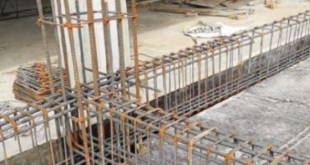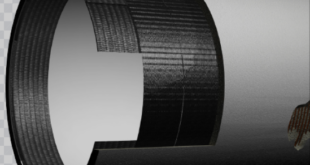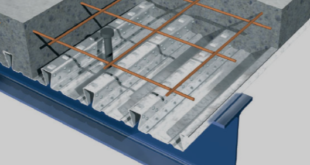In this tutorial, the Simulation of the CFRP blanket effect on reducing the deformation of buried pipelines exposed to the subsurface explosion in Abaqus has been investigated. The air, soil, and TNT are modeled as three-dimensional parts inside an Eulerian part. The steel pipe is modeled as a three-dimensional part. The CFRP blanket is modeled as three three-dimensional part with some layers. You can see a figure of the assembled parts below
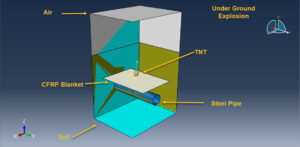
Buried pipelines are vital arteries used to transport water, oil, and similar substances. Unfortunately, there have been different terrorist attacks against oil and gas pipelines in the last 28 years. This has highlighted the necessity of analyzing and designing pipelines that can 29 withstand such blast loads. The estimation of pipeline damage is a very complex work 30 because different factors such as explosion, the transmission of energy to the soil and air, soil pipeline interaction, and pipeline behavior affect the final results. Although analytical and empirical approaches have widely been used in explosion problems, numerical methods provide us with valuable information about the behavior of structural members with sophisticated behaviors.
This study adopts the ideal gas equation of state to simulate air. The shaped charge is modeled using the Jones-Wikens-Lee (JWL) equation of state. This equation models the pressure induced by the release of the chemical energy of an explosion. This model is implemented using the so-called scheduled combustion structure in the sense that the explosion is not triggered via stressing explosive substances. Rather, the time traveling the explosion wave to each point is defined by the velocity of the explosion wave and the distance of each point from the explosion center. JWL equation of state can be written under the internal energy per unit of the mass of an explosive substance
Blast loads cause severe strains in pipes. Therefore, any model used for pipeline modeling should take strain rate into account. Johnson-Cook is a fit model for simulating the behavior of many materials, especially metals, under severe strain deformations
FRP is made of high-strength fibers inlaid in an epoxy resin substrate. GFRP is a conventional FRP composite produced as strips, sheets, tendons, or reinforcing columns. In addition to cost-effective execution advantage, FPRs show high strength, high formability, and remarkable energy absorption, before the failure point, behavior
The dynamic explicit step is so appropriate for this type of analysis. The proper mesh and boundaries are assigned to all parts
After the simulation, all results such as stress, strain, damage in CFRP, pipe deformation, TNT wave and volume fraction, soil deformation, and others are available. You can see some figures for the results below
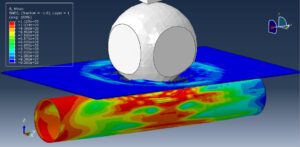
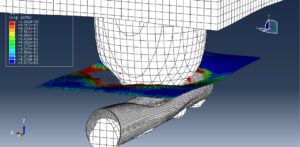
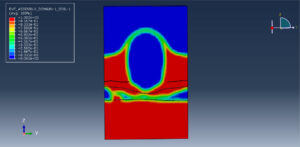
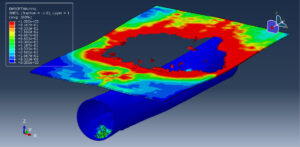
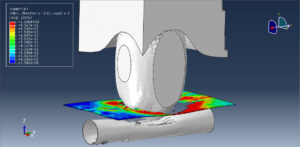
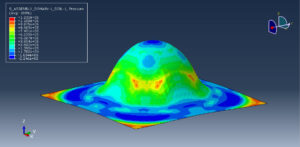
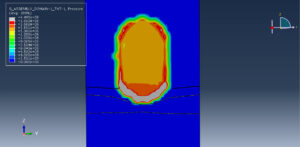
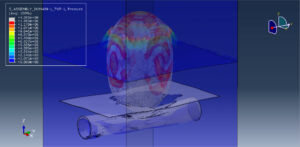
 Abaqus tutorials Abaqus tutorials
Abaqus tutorials Abaqus tutorials
